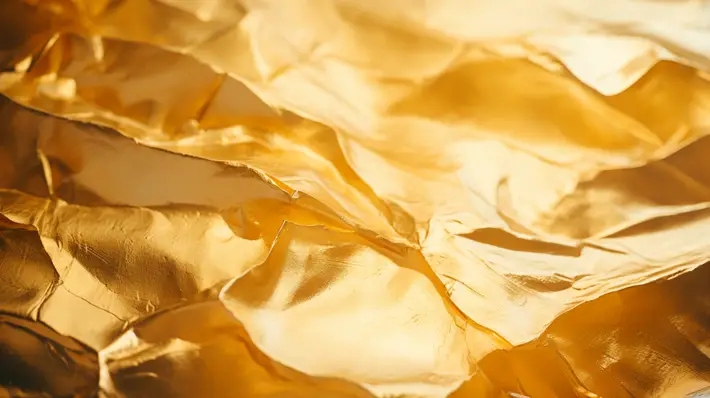What You Should Know About Gold Leaf And The History Of Art

Gold has always been desirable. The Ancient Egyptians used gold leaf to decorate an array of buildings and other sacred symbols. It was used to create statutes and, in gilded form, (commonly known as gold leaf) it was merged with other metals, such as bronze.
Naturally, gold found its way into the arts, specifically designed gold leaf for art is so thin that it can be tailored to almost any shape and attached to any material.
The production process
Gold leaf is a very thin sheet of gold. It takes hours to produce, requiring a skilled craftsman to heat the gold and, once it is molten, create small pieces of gold. These can then be hammered repeatedly until they become wafer-thin sheets. The hammering process can take three to four hours.
While modern machines can assist with the process, it takes a skilled craftsman to create the thinnest gold leaf, as little as 0.5 microns thick. While gold leaf has been used extensively throughout history. Today, there are increasingly few skilled craftsmen left.
Those that are left are dedicated to maintaining the trade and preserving existing artworks and architecture.
Italian art & gold leaf
This is most evident in Italy where there is a long history of gold leaf in art.
An excellent example is the Giotto Crucifix in Santa Maria, Florence. It was created around 1390 and it’s an impressive sight as you enter the church in Florence. It’s also well-preserved thanks to the use of double gold leaf: it was used to edge the frame and in parts of Christ’s body.
Another great example of gold leaf in Italian art is “Il Dormiente”, also in Florence. This is literally a sculpture of a sleeping man, curled on the ground. In fact, the display consists of several sleepers, one of which is coated in gold leaf. It was created in the late 20th century and will undoubtedly be relevant for decades to come.
It’s also worth mentioning Saint Nicholas, The Pilgrim Statue in Trani Cathedral Italy. It’s an impressive piece, dating back hundreds of years and it uses gold leaf to emphasize specific points, such as the edging of the cross and his robe.
That’s just a few of the Italian artworks which use gold leaf, it has been an important part of the cultural development of the country.
Summing up
Today, gold leaf is still commonly used by artists. It helps to add emotion to any painting. However, gold leaf has also become a popular addition to many other forms of art. This includes sculptures and wall decorations.
The simple truth is that gold leaf is very durable and can transform virtually any work of art. It’s little wonder that it is so popular and will remain so.










